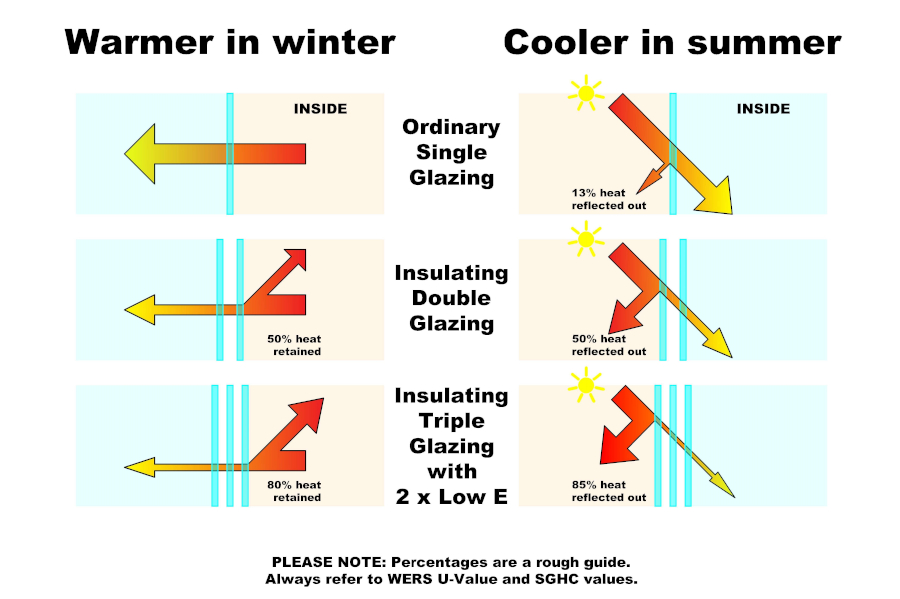All Categories
Featured
Table of Contents
Double-glazing Versus Low-e Glass in Belmont Perth
That window can send more solar heat in winter season than in summer. A west-facing window on a summer season's afternoon has an angle of incidence from near 0 up to 30 with a large effective area of solar radiation. A north-facing window, in summer season, has a high angle of occurrence and a low effective location of solar radiation, so can send less heat than a west-facing one.

You can rapidly and easily improve the thermal performance of your house by changing your windows. There are thousands of types of glass and frames to pick from.
Double Glazing Versus Secondary Glazing in Warwick Perth
Single glazing with clear glass is not really efficient when it comes to heat loss or gain. To improve efficiency, you can use single glazing with a more energy-efficient type of glass such as low emissivity (low-e) glass.
The energy efficiency of IGUs also depends on: the residential or commercial properties of each layer of glass. Various glass types (for example, clear and low-e glass) can be put together in an IGU.
Double Glazing For Warmer Temperature : R/melbourne in Mirrabooka WA

IGU cavities can be filled with air or a more inert, low-conductivity gas such as argon the width of the cavity. Wider cavities supply lower (much better) U values, with 12mm usually accepted as the preferred gap how well the cavity is sealed.
If argon is installed to the cavity in place of air, wetness is reliably left out the level of desiccant (drying representative). The spacer (metal or polymer strip) that separates the glass layers includes a desiccant to take in any moisture. Inadequate desiccant might trigger moisture to condense on the glass surface area in cold conditions, reducing thermal efficiency.
Double Glazing Versus Secondary Glazing in Singleton Perth
In fact, IGUs can provide better energy performance for all climates, especially in heated and air-conditioned houses. Cross-section detail of single, double and triple-glazing units Low emissivity glass (commonly known as low-e glass) lowers heat transfer. Low-e glass may be either high or low transmission: High transmission low-e glass has a covering that enables daytime from the sun to pass into your house to attain good solar heat gain, however minimizes the quantity of the long wavelength infrared heat that can escape back through the window.
Low-e glass has either a pyrolytic finishing or a vacuum-deposited thin movie metal finishing. Pyrolytic finishings are long lasting and can be used for any glazing; vacuum-deposited coatings are soft and are only utilized within IGUs. Low-e coatings can substantially enhance both U worth and SHGC; however, they must be utilized properly or they will either weaken or stop working to carry out as needed.
Solace Creations: Home in Scarborough WA
Low-e coatings can be used in combination with clear, toned or reflective glass. Low-e coverings on glazing can decrease heat transfer where needed Picture: Department of Market, Science, Energy and Resources Toned glass has colouring ingredients consisted of throughout manufacture. It is readily available in different colours, typically bronze, grey, blue and green.
Latest Posts
Why Is Double Glazing So Important In Winter? in Floreat Western Australia
Pros And Cons Of Argon Gas In Windows in Bedford Perth
Can I Have Double Glazing In A Summerhouse? in Madeley Perth